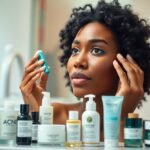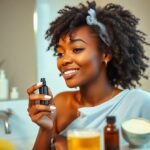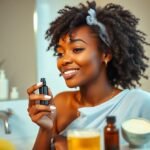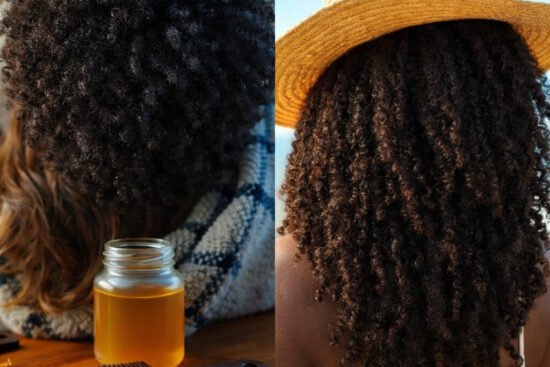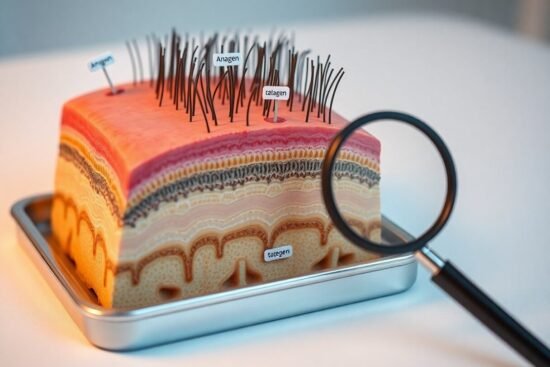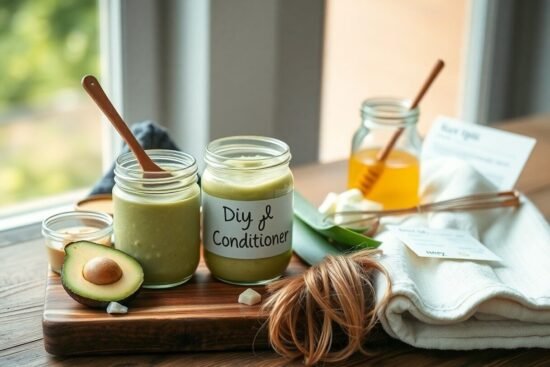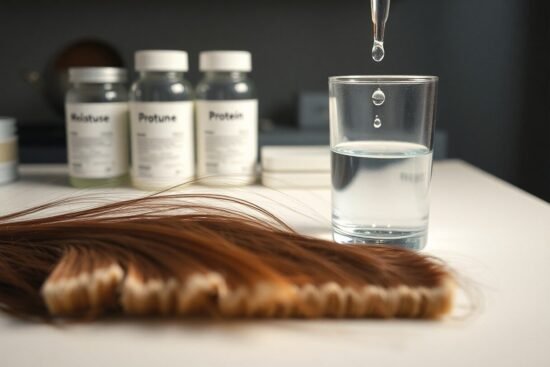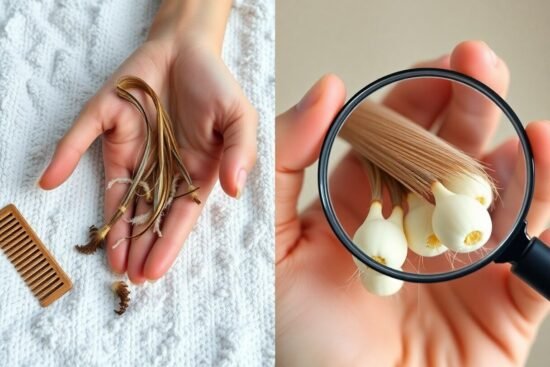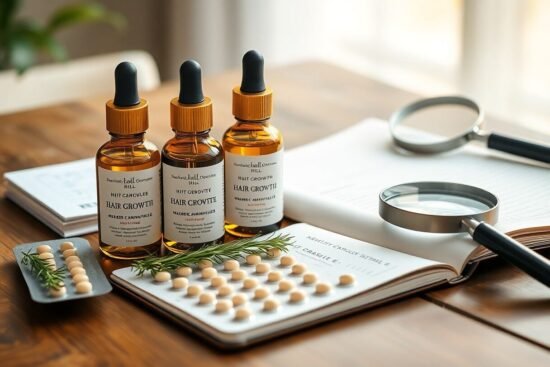
You might be wondering how protective hairstyles can benefit your hair care routine. In my experience, they offer a unique way to shield your hair from damage caused by environmental factors and styling tools. By incorporating these styles, you can not only maintain your hair’s health but also enhance its growth potential. I’ll share with you the various benefits of protective hairstyles, as well as the best practices to ensure your hair stays nourished and strong. Let’s examine how you can make the most of these styles for optimal hair care.
Key Takeaways:
- Protective hairstyles are designed to minimize stress on the hair shaft and prevent breakage, promoting overall hair health.
- These styles can help protect hair from environmental factors such as heat, humidity, and pollution, contributing to its longevity.
- Common protective hairstyles include braids, twists, buns, and updos, offering versatility while safeguarding hair.
- It’s important to maintain scalp health by keeping it clean and moisturized, even when wearing protective styles.
- Using the right products, such as lightweight oils and leave-in conditioners, can enhance the benefits of protective hairstyles.
- Limit the duration between taking down and re-styling protective hairstyles to avoid matting and potential tangles.
- Regularly assess your hair and scalp condition to determine if a protective style is still suitable or needs a break.
The Science of Protective Hairstyles
Understanding Hair Structure and Damage Prevention
The composition of your hair strands significantly influences how they respond to styling and environmental factors. Each hair is made up of three layers: the cuticle, cortex, and medulla, with the cuticle acting as a protective barrier. Frequent manipulation can lead to cuticle damage, resulting in frizz and breakage. By employing protective hairstyles, you shield your hair from harmful elements and reduce the chances of mechanical stress, allowing it to maintain its integrity and health.
The Impact of Hair Manipulation on Growth
Hair growth can be adversely affected by excessive manipulation due to breakage and thinning. Research indicates that 70% of hair loss is attributed to traction and mechanical stress from styling tools and techniques. Protective hairstyles serve to minimize this interaction, offering support while helping strands retain length and fullness. The right practices can lead to significant improvements, with some experiencing an increase in growth rates after adopting protective styles.
Engaging in styles that limit stress on your hair encourages a more favorable environment for growth. As you embrace protective hairstyles, you allow your strands to rest and recover from constant styling practices that typically weaken their structure. I’ve observed firsthand how using styles such as braids, twists, and buns can help your hair alleviate tension, enabling it to grow stronger and healthier over time. When you give your hair a break from daily styling, it has the opportunity to flourish, which can be particularly beneficial during seasons of harsh weather or intense heat.
Benefits Beyond Aesthetics
Beyond their visual appeal, protective hairstyles offer numerous functional benefits that can significantly improve the overall health of your hair. Engaging in styles that shield your strands not only preserves their integrity but also plays a vital role in promoting growth and longevity. Understanding these benefits can deepen your commitment to adopting protective styles as part of your hair care regimen.
Shielding Hair from Environmental Stressors
Protective hairstyles act as a barrier against environmental stressors, such as harsh UV rays, wind, and pollutants. By minimizing direct exposure, you reduce the risk of damage and breakage that can occur from daily elements. Covered or tucked hair is less likely to suffer from dryness or frizz, which in turn keeps your locks looking vibrant and healthy.
Enhancing Moisture Retention for Healthier Strands
Moisture retention is vital for maintaining hair elasticity and reducing brittleness. Protective hairstyles provide a valuable opportunity for your hair to soak in moisture without the daily interference of manipulation. Keeping your strands tucked away minimizes the evaporation of natural oils, ensuring that hair remains hydrated for longer periods.
To truly capitalize on the benefits of moisture retention, consider integrating hydrating leave-in conditioners or oils when styling. Applying these products before creating a protective style can lock in that added moisture, allowing your hair to benefit from continued hydration while sheltered. With the right combination of products and styles, you’ll notice improvements in your hair’s texture, strength, and overall appearance. This moisture management approach can lead to softer, more manageable strands and reduced fragility, making your hair less prone to breakage.

Crafting the Perfect Protective Style
Creating the perfect protective style requires careful thought and planning. I carefully consider my hair type, texture, and length to select a style that not only protects my hair but also suits my lifestyle. Incorporating elements like braids, twists, or buns can add variety while keeping my hair safe from environmental stressors. A well-crafted protective style not only nurtures the health of my hair but can also serve as a fashion statement, showing off my personal creativity and flair.
Essential Tools and Products for Success
To achieve a successful protective style, I gather a few imperative tools and products. Quality combs, hair ties, and clips help in sectioning and securing the hair efficiently. I also incorporate moisturizing creams or oils to keep my hair hydrated while it’s tucked away. Additionally, I always make sure to have a satin scarf or bonnet on hand, which plays a vital role in minimizing friction and maintaining my style’s integrity during sleep.
Techniques for Longevity and Comfort
For a protective style that lasts, I focus on several key techniques. A clean and moisturized scalp is non-negotiable; I always cleanse my hair before styling to prevent product buildup. Adequately sectioning my hair ensures ease and precision, preventing unnecessary tension on the strands. To maximize comfort, I avoid styles that tug or pull too tightly, which can harm my hair roots and lead to breakage. Additionally, I make it a point to refresh my moisturizers throughout the wear time, providing ongoing nourishment and maintaining the health of my hair.
Common Pitfalls to Avoid
As you explore protective hairstyles, steering clear of certain pitfalls is important for maintaining healthy hair. Issues such as neglecting to maintain scalp health and applying styles with excessive tension can lead to more damage than protection. Prioritizing the well-being of your scalp and hair will ensure your protective styles serve their intended purpose without causing harm.
Overlooking Scalp Health in Protective Styles
Focusing solely on your hair can sometimes mean your scalp receives inadequate attention. A healthy scalp is the foundation for strong hair, so neglecting it while wearing protective styles can lead to issues like itchiness, flakiness, and possible hair loss. Incorporating regular scalp massages, using natural oils, and practicing cleanliness helps keep the scalp nourished and free from buildup.
The Risks of Too Much Tension and Neglect
Excessive tension from tight hairstyles can result in traction alopecia, a condition where hair is pulled from the follicles, causing thinning or bald patches. Moreover, prolonged wear of heavy or tight styles without care leads to an increased risk of breakage. Regularly assessing the fit and tightness of your protective styles is key to preventing these issues.
Over time, I’ve witnessed the damaging effects of ignoring the signs of tension and neglect. A classic example is when a friend consistently wore tight braids for months, thinking the style would protect her hair. Instead, she faced significant hair thinning around the edges and a sensitivity on her scalp that required treatment. Prioritizing light, comfortable styles and giving your hair breaks can save you from unnecessary distress, ensuring both the beauty and health of your tresses.
Cultural Significance and Personal Expression
Historical Context of Protective Hairstyles in Various Cultures
Protective hairstyles have deep roots in many cultures, particularly within African, Afro-Caribbean, and Indigenous communities. Historically, these styles served not only as methods of hair protection but also as symbols of identity, social status, and cultural heritage. For example, the intricate braiding techniques of the Himba people in Namibia reflect their connection to tradition and community, while Cornrows are a testament to African ancestry, often carrying historical and familial meanings. Each protective style embodies a rich narrative of cultural significance.
The Modern Renaissance of Protective Styles
Today, there is a resurgence of interest in protective hairstyles as more individuals embrace their natural textures. Social media platforms showcase a vibrant tapestry of styles that encourage self-acceptance and creative expression. From box braids to twists and wigs, protective hairstyles are celebrated not only for their practicality but also as art forms that convey personal identity. Influencers and everyday individuals alike are reclaiming their heritage and fostering a sense of community through shared techniques and inspirations.
This modern renaissance is not just a trend; it’s a powerful movement centered on empowerment and individuality. As we navigate the complexities of beauty standards in society, protective hairstyles allow us to challenge mainstream definitions of beauty and embrace diverse aesthetics. Many are using these styles not just for function but also as statements of resistance and pride. In essence, protective hairstyles have evolved into a canvas where I showcase my artistry, creativity, and cultural pride, celebrating my roots while expressing who I am today.
Summing up
Following this exploration of protective hairstyles, I encourage you to embrace the numerous benefits they offer for your hair health and overall style. By incorporating best practices, such as proper maintenance and selection of styles that suit your hair type, you can enhance your hair’s resilience and encourage growth. Prioritizing your hair’s needs through protective styling not only protects it from damage but also allows you to experiment with various looks. Take the initiative to implement these strategies and watch your hair flourish.
FAQ
Q: What are protective hairstyles?
A: Protective hairstyles are specific styling techniques used to shield the hair from environmental stressors, excessive manipulation, and damage. These styles typically involve keeping the ends of the hair tucked away or secured, which helps to minimize breakage and promote overall hair health. Common examples include braids, twists, updos, and wigs.
Q: What are the benefits of wearing protective hairstyles?
A: There are several benefits to wearing protective hairstyles. Firstly, they help to retain moisture in the hair, which prevents dryness and brittleness. Secondly, they reduce the need for daily styling, minimizing heat exposure and mechanical damage. Additionally, these hairstyles can help stimulate hair growth by allowing the scalp to rest, as well as offer versatility in styling options while keeping the hair safe.
Q: How long should I keep a protective hairstyle in?
A: The duration for which to keep a protective hairstyle varies depending on the style and individual hair type. Generally, it’s advisable to keep a hairstyle for at least two weeks but not longer than six to eight weeks to avoid stress on the scalp and hair. Regular maintenance, such as cleaning the scalp and moisturizing as needed, can help maximize benefits while the style is in place.
Q: Can protective hairstyles cause damage to my hair?
A: While protective hairstyles are designed to safeguard hair, improper execution or maintenance can lead to damage. Styles that are too tight can cause traction alopecia and breakage, while neglecting scalp care can lead to buildup and irritation. It’s important to ensure that the style is not overly tight and that the hair and scalp remain clean and moisturized.
Q: Are there specific products recommended for protective hairstyles?
A: Yes, the right products can enhance the effectiveness of protective hairstyles. Look for moisturizing creams, oils, and leave-in conditioners that cater to your hair type. It’s also beneficial to consider using a scalp treatment to maintain scalp health and prevent dryness or irritation during the period your hairstyle is worn.
Q: How can I prepare my hair before styling it in a protective style?
A: Preparing your hair before engaging in a protective style is important for achieving the best results. Start by gently cleansing and conditioning your hair to remove impurities and enhance moisture. It’s advisable to trim any split ends and apply a leave-in conditioner or nourishing oil, ensuring the hair is well-hydrated before styling. This preparation aids in minimizing breakage and ensures optimal health while the style is in place.
Q: What are some popular types of protective hairstyles?
A: There are numerous popular protective hairstyles to consider based on personal preference and hair type. Some widely embraced options include box braids, twists (flat or Senegalese), cornrows, faux locs, and wigs or weaves. Each style has its unique appeal and can offer varying levels of protection, so explore different options to find what suits you best.



